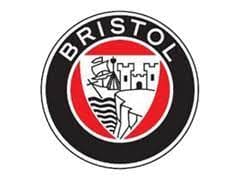BRISTOL Car PDF Manuals
Bristol Cars History
There're 3 BRISTOL car service manuals.
The Bristol brand was formed in 1947, when the British aviation company Bristol Airplane decided to enter the automotive market, using the technical documentation received as a result of war reparations for pre-war BMW models.
The first car of the Bristol brand received a ladder frame from a BMW 326, an engine from a BMW 328 and a four-seater coupe body from a BMW 327.
Its engine was an in-line 6-cylinder, with one lower camshaft, two valves per cylinder on different sides of the hemispherical combustion chamber and three carburetors, with a volume of 1971 cm3 and a power of 80 hp; gearbox - 4-speed manual with freewheel; suspension - independent on a transverse spring in front and dependent torsion bar in the rear; brakes - hydraulic drum on all wheels.
The body was assembled from steel and aluminum panels according to aviation standards.
From 1947 to 1950 487 Bristol 400s were produced, including several convertibles by Pininfarina.
Until the beginning of the 60s.
Bristol products were closely associated with BMW, but in 1960 Bristol Cars split from the aircraft factory and began to purchase V8 engines and automatic transmissions from the Canadian subsidiary of Chrysler Corporation.
Nearly all Bristol models were expensive, high-performance hand-built four-seat coupes.
They were produced in small batches for a limited number of customers, mainly from the UK.
When the design and construction of these cars became obsolete, an attempt was made to build neoclassical supercars and roadsters.
In 2011, Bristol Cars went bankrupt and became part of the Kamkorp Group holding, and in 2020 the brand was liquidated.



